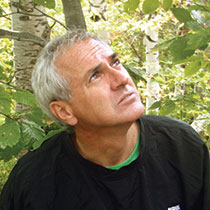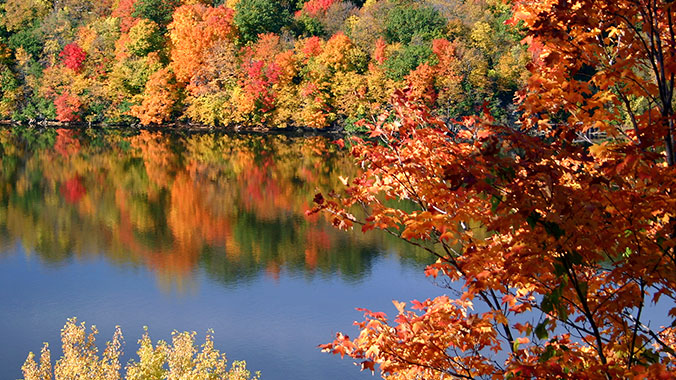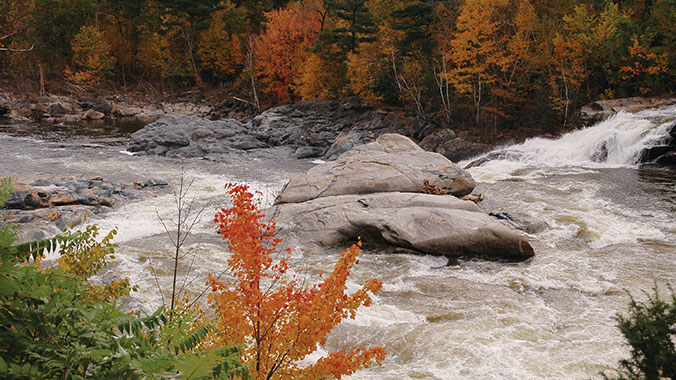Ogunquit
by Kathryn M. Severson, Susan Day Meffert, Marie D. Natoli
Blessed with extraordinary natural beauty, the village of Ogunquit has attracted artists of every kind. The artistic culture introduced by Charles Woodbury and Hamilton Easter Field, and later enriched by the success of the Ogunquit Playhouse, greatly added to the natural beauty of Ogunquit's Marginal Way, white sand beach, and harbor in Perkins Cove. Authors Kathryn M. Severson, Susan Day Meffert, and Marie D. Natoli have collaborated to capture the enduring charm of this "beautiful place by the sea.?"
Dark Tide: The Great Boston Molasses Flood of 1919
by Stephen Puleo
"Shortly after noon on January 15, 1919, a fifty-foot-tall steel tank filled with 2.3 million gallons of molasses collapsed on Boston's waterfront, disgorging its contents as a fifteen-foot-high wave of molasses that briefly traveled at thirty-five miles per hour. When the tide receded, a section of the city's North End had been transformed into a war zone. The Great Boston Molasses Flood claimed the lives of twenty-one people and scores of animals, injured 150, and caused widespread destruction.
But the molasses flood was more than an isolated event. Its story overlays America's story during a tumultuous decade in our history. Tracing the era from the tank's construction in 1915 through the multiyear lawsuit that followed the tragedy, Dark Tide uses the drama of the flood to examine the sweeping changes brought about by World War I, Prohibition, the Anarchist movement, the Red Scare, immigration, and the role of big business in society."
In Defense of Witches: The Legacy of the Witch Hunts and Why Women Are Still on Trial
by Mona Challet
Celebrated feminist writer Mona Chollet explores three types of women who were accused of witchcraft and persecuted: the independent woman, since widows and celibates were particularly targeted; the childless woman, since the time of the hunts marked the end of tolerance for those who claimed to control their fertility; and the elderly woman, who has always been an object of at best, pity, and at worst, horror. Examining modern society, Chollet concludes that these women continue to be harrassed and oppressed. Rather than being a brief moment in history, the persecution of witches is an example of society’s seemingly eternal misogyny, while women today are direct descendants to those who were hunted down and killed for their thoughts and actions.
The Cliffs
by Eleanor Berman
J. Courtney Sullivan's novel "The Cliffs" is inspired by Ogunquit, Maine, but the novel is set in a fictionalized version of the town called Awadapquit. The story revolves around a house on a cliff overlooking the sea, and the women who have lived there over centuries. The house becomes a central element in the lives of the characters, particularly Jane Flanagan, who discovers the abandoned mansion as a teenager.
Not Without Peril: 150 Years Of Misadventure On The Presidential Range Of New Hampshire
by Nicholas Howe
Among the most dangerous mountains in the world, Mount Washington has challenged adventurers for centuries with its severe weather. From the days when gentlefolk ascended the heights in hoop skirts and wool suits to today's high-tech assaults on wintry summits, this book offers extensive and intimate profiles of people who found trouble on New Hampshire's Presidential Range, from the nineteenth century through present day. Veteran journalist Nicholas Howe draws on his investigative skills and familiarity with the mountains of his childhood to create this gripping collection. The result is a compelling story about our changing relationship with the mountains we love and the risks they pose. This Tenth Anniversary Edition includes a new afterword by Nicholas Howe, with commentary on how our relationship with the Presidential Range has evolved over the last decade.
Listening to Stone
by Dan Snow
In his highly anticipated second book, Vermonter Dan Snow once again proves that he is not just one of America's premier artisans, but also one of our most articulate voices on the natural world and our relationship to it. Snow's medium is stone: He is the nation's premier drystone wall builder. Schooled in this ancient craft, he painstakingly creates structures as breathtaking as sculpture with nothing but gravity as their glue. In Listening to Stone, Peter Mauss's tactile photographs of Snow's artistry are matched by the artisan's quietly compelling prose.
Freedom Trail Boston: Ultimate Tour and History Guide; Tips, Secrets, and Tricks
by Steve Gladstone
The Guide features over 100 photos and illustrations, as well as access to interactive maps, video, and other information. There are detailed descriptions of the important related events including the Boston Massacre, the Boston Tea Party, Paul Revere's Ride, the Battles of Lexington and Concord, and the Battle of Bunker Hill.
The Boston Girl: A Novel
by Anita Diamant
Anita Diamant’s “vivid, affectionate portrait of American womanhood” (Los Angeles Times), follows the life of one woman, Addie Baum, through a period of dramatic change. Addie is The Boston Girl, the spirited daughter of an immigrant Jewish family, born in 1900 to parents who were unprepared for America and its effect on their three daughters. Growing up in the North End of Boston, then a teeming multicultural neighborhood, Addie’s intelligence and curiosity take her to a world her parents can’t imagine—a world of short skirts, movies, celebrity culture, and new opportunities for women. Addie wants to finish high school and dreams of going to college. She wants a career and to find true love. From the one-room tenement apartment she shared with her parents and two sisters, to the library group for girls she joins at a neighborhood settlement house, to her first, disastrous love affair, to finding the love of her life, eighty-five-year-old Addie recounts her adventures with humor and compassion for the naïve girl she once was.
Vermont . . . Who Knew?: Quirky Characters, Unsung Heroes, Wholesome, Offbeat Stuff
by Robert F. Wilson
Vermont. . . Who Knew? is a nonfiction travel book, including both serious and humorous content. It comprises nine chapters--one with a state-wide focus and eight regional chapters. The result: 125 or so profiles, essays, and anecdotes encompassing the most unique people, places, and events--both past and present--the Green Mountain State has to offer.
Mount Washington: Narratives and Perspectives
by Mike Dickerman
For two centuries, Mount Washington has been the object of countless writers' wonder and fascination. In this volume, more than twenty previously written pieces inspired by New England's highest peak have been carefully selected, and collectively these cover nearly every aspect of the mountain's storied past. Tag along on early explorations of the White Mountains and its fabled Presidential Range. Follow the history of the nation's first mountain-climbing train and witness many of Mount Washington's tales of human tragedies. Editor and area historian Mike Dickerman uncovers the fascinating history of one of the New Hampshire's most renowned natural wonders.
Vermont Women, Native Americans & African Americans: Out of the Shadows of History
by Cynthia D. Bittinger
Vermont's constitution, drafted in 1777, was one of the most enlightened documents of its time, but in contrast, the history of Vermont has largely been told through the stories of influential white men. This book takes a fresh look at Vermont's history, uncovering hidden stories, from the earliest inhabitants to present-day citizens striving to overcome adversity and be advocates for change. Native Americans struggled to maintain an identity in the state while their land and rights were disappearing. Lucy Terry Prince was the first female African American poet who rose above racism to argue her case before Vermont's governor and won. Educator and historian Cynthia Bittinger unearths these and other inspirational stories of the contributions of women, Native Americans and African Americans to Vermont's history.
Wild Women of Boston: Mettle and Moxie in the Hub
by Dina Vargo
The sons of liberty are celebrated in the rebellious history of Boston--but what of their sisters? An audacious and determined procession of reformers, socialites, criminals and madams made the city what it is today. One hundred years before Rosa Parks, African American abolitionist Sarah Parker Remond refused to give up her seat while attending a play in Boston. Fiery activists Harriet Hemenway and Minna Hall led a boycott against bird plumage in ladies' dress and brought the fashion industry to its knees. Rachel Wall was the last woman to be hanged in Massachusetts after leading a daring life as a robber and pirate. Later, women like Boston Marathon runner Kathrine Switzer also blazed their own trails. Author Dina Vargo unearths the remarkable stories of the wild women of the Hub.
New England Bucket List Guide
by Linda D. Wade
Explore the best of New England with this ultimate bucket list guide, packed with stunning full-color photography, detailed maps, and expert recommendations. Whether you're a first-time visitor or a seasoned traveler, this guide will help you uncover must-see destinations, hidden gems, and unforgettable experiences across the region.
Painting a Nation: American Art at Shelburne Museum
by Thomas Denenberg, John Wilmerding, Katie Wood Kirchhoff
An in-depth look at one of the richest collections of American art, assembled by Electra Havemeyer Webb, renowned collector and founder of Shelburne Museum.
Moose Memoirs and Lobster Tales: As True as Maine Stories Ought to Be
by John McDonald
John McDonald has been making people laugh for decades with his humorous yarns poking fun at people from away, people from Maine, and life in general. Following up the wildly popular A Moose and a Lobster Walk into a Bar, the ""Dean of Maine Storytelling"" offers a new collection of stories that will make you laugh till you cry and cry till you laugh. Here's a new round of classic stories brimming with half truths, stretched truths, and wry observations about life in Maine.
It Happened in New Hampshire
by Stillman Rogers
It Happened in New Hampshire recounts twenty to thirty episodes from the history of the Granite State, including memorable events such as A Presidental Black Eye, 1789 and New Hampshire Picks a President, 1952, but also featuring lesser-known tales. From its earliest settlements at Odiorne Point, Dover, and Portsmouth, New Hampshire was different from the other colonies, and its history holds many surprises and a number of events that were significant to the founding and growth of the United States.
I, Tituba, Black Witch of Salem
by Maryse Conde
This wild and entertaining novel expands on the true story of the West Indian slave Tituba, who was accused of witchcraft in Salem, Massachusetts, arrested in 1692, and forgotten in jail until the general amnesty for witches two years later. Maryse Condé brings Tituba out of historical silence and creates for her a fictional childhood, adolescence, and old age. She turns her into what she calls "a sort of female hero, an epic heroine, like the legendary ‘Nanny of the maroons,’" who, schooled in the sorcery and magical ritual of obeah, is arrested for healing members of the family that owns her.
The Midnight Ride
by Ben Mezrich
From the celebrated, New York Times bestselling author comes a commercial thriller of an MIT grad student who unwittingly uncovers the hidden connection between the Gardner Museum heist and the most fascinating secret in American history.
Last Night in Twisted River: A Novel
by John Irving
In 1954, in the cookhouse of a logging and sawmill settlement in northern New Hampshire, an anxious twelve-year-old boy mistakes the local constable’s girlfriend for a bear. Both the twelve-year-old and his father become fugitives, forced to run from Coos County—to Boston, to southern Vermont, to Toronto—pursued by the implacable constable. Their lone protector is a fiercely libertarian logger, once a river driver, who befriends them. In a story spanning five decades, Last Night in Twisted River depicts the recent half-century in the United States as “a living replica of Coos County, where lethal hatreds were generally permitted to run their course.”
Inventing Ethan Allen
by John J. Duffy, H. Nicohlas Muller
Since 1969, Ethan Allen has been the subject of three biographical studies, all of which indulge in sustaining and revitalizing the image of Allen as a physically imposing Vermont yeoman, a defender of the rights of Americans, an eloquent military hero, and a master of many guises, from rough frontiersman to gentleman philosopher. Seeking the authentic Ethan Allen, the authors of this volume ask: How did that Ethan Allen secure his place in popular culture? As they observe, this spectacular persona leaves little room for a more accurate assessment of Allen as a self-interested land speculator, rebellious mob leader, inexperienced militia officer, and truth-challenged man who would steer Vermont into the British Empire. Drawing extensively from the correspondence in Ethan Allen and his Kin and a wide range of historical, political, and cultural sources, Duffy and Muller analyze the factors that led to Ethan Allen’s two-hundred-year-old status as the most famous figure in Vermont’s past. Placing facts against myths, the authors reveal how Allen acquired and retained his iconic image, how the much-repeated legends composed after his death coincide with his life, why recollections of him are synonymous with the story of Vermont, and why some Vermonters still assign to Allen their own cherished and idealized values.
















